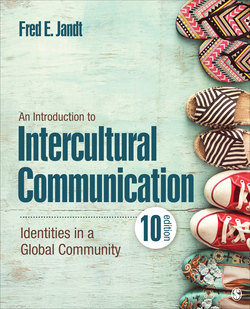Читать книгу An Introduction to Intercultural Communication - Fred E. Jandt - Страница 21
На сайте Литреса книга снята с продажи.
Culture
ОглавлениеCan each of these sources of identity be considered a “culture”?
Traditionally, the term Culture was used to refer to the following:
A community or population sufficiently large enough to be self-sustaining—that is, large enough to produce new generations of members without relying on outside people.
The totality of that group’s thought, experiences, and patterns of behavior and its concepts, values, and assumptions about life that guide behavior and how those evolve with contact with other cultures. Hofstede (1994) classified these elements of culture into four categories: symbols, rituals, values, and heroes. Symbols refer to verbal and nonverbal language. Rituals are the socially essential collective activities within a culture. Values are the feelings not open for discussion within a culture about what is good or bad, beautiful or ugly, normal or abnormal, which are present in a majority of the members of a culture, or at least in those who occupy pivotal positions. Heroes are the real or imaginary people who serve as behavior models within a culture. A culture’s heroes are expressed in the culture’s myths, which can be the subject of novels and other forms of literature (Rushing & Frentz, 1978). Janice Hocker Rushing (1983) has argued, for example, that an enduring myth in U.S. culture is the rugged individualist cowboy of the American West.
The process of social transmission of these thoughts and behaviors from birth in the family and schools over the course of generations.
Members who consciously identify themselves with that group. Collier and Thomas (1988) describe this as Cultural identity, or the identification with and perceived acceptance into a group that has a shared system of symbols and meanings as well as norms for conduct. What does knowing an individual’s cultural identity tell you about that individual? If you assume that the individual is like everyone else in that culture, you have stereotyped all the many, various people in that culture into one mold. You know that you are different from others in your culture. Other cultures are as diverse. The diversity within cultures probably exceeds the differences between cultures. So just knowing one person’s cultural identity doesn’t provide complete or reliable information about that person. Knowing another’s cultural identity does, however, help you understand the opportunities and challenges that each individual in that culture has had to deal with.
